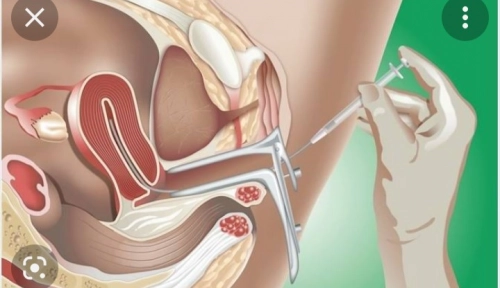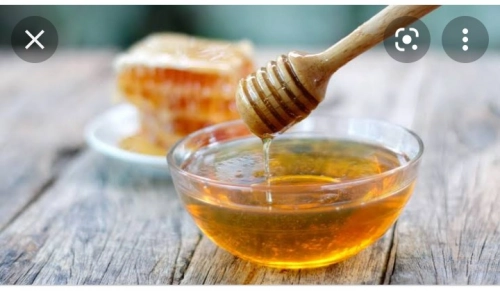profile/6042IMG_20210317_185432.jpg.webp
Inani2021

What To Know About Artificial Insemination In Humans
~5.5 mins read
Artificial insemination is a method of treating infertility by inserting semen directly into a womb.
Medical scientists developed the procedure to breed livestock. Since then, they have adapted the technique for use in humans.
Intrauterine insemination (IUI) is the most common method of artificial insemination.
Why use it?
Artificial insemination can help people who are trying to treat infertility.
Artificial insemination can benefit couples or individuals with a range of needs.
In the United States, 6 percentTrusted Source of women aged 15 to 44 years are unable to conceive or maintain a pregnancy after one year of unprotected sex.
The Centers for Disease Control and Prevention (CDC) suggest that a woman should consider seeing a fertility doctor to discuss treatment if she is:
unable to conceive within one year of trying
prone to irregular periods
over 35 years of age and trying to conceive
Doctors also recommend fertility treatment if a woman has two or more spontaneous miscarriages.
IUI can help in the following medical situations:
IUI can help support a couple that produces healthy sperm and eggs but is unable to have intercourse, possibly due to a medical condition, such as erectile dysfunction.
In women with cervical factor infertility, the cervix either does not produce the mucus that helps sperm travel to the womb, or the mucus contains a substance that kills the sperm. Artificial insemination can help bypass this problem.
Endometriosis causes the cells from the womb lining start to grow outside the womb, for example, in the ovaries or the fallopian tubes. Artificial insemination can be successful in mild to moderate cases of endometriosis. Many women with endometriosis can conceive naturally.
In rare cases, a woman may have an allergic reaction to certain proteins in sperm or semen. The artificial insemination can remove most of these before applying the sperm.
Some men are unable to produce enough sperm for successful fertilization, or their sperm may not be sufficiently motile. This means the sperm cannot move towards the egg effectively.
Certain medical treatments carry infertility as a risk, such as radiation therapy.
Before the treatment, a man can freeze some of his sperm for future use in artificial insemination.
In some couples, there is no clear reason for infertility, but the doctor may recommend IUI regardless.
Procedure
The important parts of an IUI procedure are obtaining and preparing the semen sample and implanting it into the uterus.
Preparation of the semen sample
The sperm may come from a partner, but this is not always the case. If a partner cannot provide sperm, a woman can choose to receive a sperm donation.
This is an option for single women, women in a same-sex relationship, or in cases where the male partner has infertility.
The clinic cools and stores the sperm.
If the procedure uses a donor, they will provide the sample will to a sperm bank. The staff at the facility then quarantines the sample and tests it for any transmittable diseases.
The facility keeps the sperm frozen and thaws it out before making any preparations. Before the freezing process, they add a chemical called cryptoprotectant that protects the sperm in cold storage.
If the partner is donating his semen, the couple will provide the sample.
There are several methods for achieving this using:
masturbation
a collection condom that collects semen during sexual intercourse
surgical sperm aspiration, where a physician removes sperm directly from the male reproductive tract
vibratory or electric stimulation if the male cannot ejaculate without assistance or devices
Once the clinic has the sperm, they “wash” it to remove elements that could interfere with fertilization.
What happens during an IUI?
Insemination is ready to begin after preparation.
During the procedure, the fertility doctor implants the sperm directly into the uterus with a fine catheter, keeping the vagina walls open using a speculum. The catheter enters the uterus through the cervix, and the doctor pushes the sperm through the catheter.
For the best results, IUI normally occurs very soon after ovulation. The ovaries have only just produced eggs, at fertility is at its highest during this point in the menstrual cycle.
Most women ovulate approximately 2 weeks after the first day of the cycle.
The doctor may give the woman an ovulation prediction kit (OPK). This is a device that detects hormone levels in the urine or saliva, giving an accurate prediction of the ovulation date.
Risks
There are a few risks when undergoing artificial insemination.
The risk of conceiving twins or triplets increasesTrusted Source if a woman receives IUI at the same time as other fertility medication, such as gonadotrophin.
A pregnancy with more than one fetus increases the chances of complications, such as premature birth or miscarriage.
Nowadays, doctors only prescribe fertility medication when there are difficulties with ovulation, or producing the egg cells from which an embryo develops.
Ovarian hyperstimulation syndrome (OHSS) can the ovaries to swell after combining fertility medication and IUI. It is rare, and symptoms are usually mild-to-moderate, but it can sometimes have serious complications.
In mild cases of OHSS, symptoms include bloating, slight abdominal pain, and possibly nausea and vomiting. More severe cases may feature dehydration, chest pain and shortness of breath.
Staying hydrated and taking paracetamol normally alleviates the pain, but more severe cases may require hospital treatment.
Outlook
It takes 2.24 cycles of IUI on average to create a successful conception.
While IUI is less effective than more intensive procedures, such as in-vitro fertilization (IVF), it has a 5 to 15 percent chance of success during the first insemination.
This chance dramatically increasesTrusted Source by the sixth insemination for women who are less than 40 years of age, according to a 2013 study in a German clinic.
In the study, the average number of cycles before a successful conception, or one that led to a live birth, was 2.24.
However, doctors do not recommend more than six cycles of IUI, as the chance of a successful conception after the sixth cycle are very small.
At this stage, try an alternative method, such as in-vitro fertilization (IVF).
After IUI treatment, the woman should wait 2 weeks before taking a home pregnancy test, because pregnancy hormones will not show in a test before then.
the physician may suggest a blood test for a more accurate result.
Takeaway
Artifical insemination, or IUI, is a procedure to help conception in a woman experiencing infertility.
The fertility doctor injects sperm is into the womb using surgical tools. A couple will often receive IUI if a man or woman experiences infertility due to an underlying condition or previous treatment.
The clinic collects a sperms sample from a male donor, stores it in extremely low temperatures, and then implants it into the uterus.
A few cycles may be necessary before a pregnancy occurs, but the procedure has a high rate of success by the sixth cycle.
profile/6042IMG_20210317_185432.jpg.webp
Inani2021

Ten Significant Medicinal Value Of Honey
~15.2 mins read
10 Surprising Health Benefits of Honey

Written by Kris Gunnars, BSc on September 5, 2018
Since ancient times, honey has been used as both a food and a medicine.
It’s very high in beneficial plant compounds and offers several health benefits. Honey is particularly healthy when used instead of refined sugar, which is 100% empty calories.
Here are the top 10 health benefits of honey.
 Share on PinterestRapeepong Puttakumwong/Getty Images
Share on PinterestRapeepong Puttakumwong/Getty ImagesHoney is a sweet, thick liquid made by honeybees.
The bees collect sugar — mainly the sugar-rich nectar of flowers — from their environment (1).
Once inside the beehive, they repeatedly consume, digest and regurgitate the nectar.
The end product is honey, a liquid that serves as stored food for bees. The smell, color and taste depend on the types of flowers visited.
Nutritionally, 1 tablespoon of honey (21 grams) contains 64 calories and 17 grams of sugar, including fructose, glucose, maltose and sucrose.
It contains virtually no fiber, fat or protein (2).
It also contains trace amounts — under 1% of the RDI — of several vitamins and minerals, but you would have to eat many pounds to fulfill your daily requirements.
Where honey shines is in its content of bioactive plant compounds and antioxidants. Darker types tend to be even higher in these compounds than lighter types (3Trusted Source, 4).
Summary
Honey is thick, sweet liquid made by
honeybees. It is low in vitamins and minerals but may be
high in some plant compounds.
Honey is thick, sweet liquid made by
honeybees. It is low in vitamins and minerals but may be
high in some plant compounds.
High-quality honey contains many important antioxidants. These include organic acids and phenolic compounds like flavonoids (5Trusted Source).
Scientists believe that the combination of these compounds gives honey its antioxidant power (5Trusted Source).
Interestingly, two studies have shown that buckwheat honey increases the antioxidant value of your blood (6Trusted Source, 7Trusted Source).
Antioxidants have been linked to reduced risk of heart attacks, strokes and some types of cancer. They may also promote eye health (8Trusted Source).
Summary Honey contains a number of antioxidants, including phenolic
compounds like flavonoids.
compounds like flavonoids.
The evidence on honey and diabetes is mixed.
On one hand, it can reduce several risk factors for heart disease common in people with type 2 diabetes.
For example, it may lower “bad” LDL cholesterol, triglycerides and inflammation while raising “good” HDL cholesterol (9Trusted Source, 10Trusted Source, 11Trusted Source).
However, some studies have found that it can also increase blood sugar levels — just not as much as refined sugar (10Trusted Source).
While honey may be slightly better than refined sugar for people with diabetes, it should still be consumed with caution.
In fact, people with diabetes may do best by minimizing all high-carb foods (12Trusted Source).
Keep in mind, too, that certain types of honey may be adulterated with plain syrup. Although honey adulteration is illegal in most countries, it remains a widespread problem (13Trusted Source).
Summary
Some studies show that honey improves heart
disease risk factors in people with diabetes. However, it also raises blood
sugar levels — so it cannot be considered
healthy for people with diabetes.
Some studies show that honey improves heart
disease risk factors in people with diabetes. However, it also raises blood
sugar levels — so it cannot be considered
healthy for people with diabetes.
Blood pressure is an important risk factor for heart disease, and honey may help lower it.
This is because it contains antioxidant compounds that have been linked to lower blood pressure (14Trusted Source).
Studies in both rats and humans have shown modest reductions in blood pressure from consuming honey (15Trusted Source, 16Trusted Source).
Summary
Eating honey may lead to modest reductions in
blood pressure, an important risk factor for heart disease.
Eating honey may lead to modest reductions in
blood pressure, an important risk factor for heart disease.
High LDL cholesterol levels is a strong risk factor for heart disease.
This type of cholesterol plays a major role in atherosclerosis, the fatty buildup in your arteries that can lead to heart attacks and strokes.
Interestingly, several studies show that honey may improve your cholesterol levels.
It reduces total and “bad” LDL cholesterol while significantly raising “good” HDL cholesterol (9Trusted Source, 10Trusted Source, 11Trusted Source, 17Trusted Source).
For example, one study in 55 patients compared honey to table sugar and found that honey caused a 5.8% reduction in LDL and a 3.3% increase in HDL cholesterol. It also led to modest weight loss of 1.3% (18Trusted Source).
Summary
Honey seems to have a positive effect on
cholesterol levels. It leads to modest reductions in total and “bad” LDL
cholesterol while raising “good” HDL cholesterol.
Honey seems to have a positive effect on
cholesterol levels. It leads to modest reductions in total and “bad” LDL
cholesterol while raising “good” HDL cholesterol.
Elevated blood triglycerides are another risk factor for heart disease.
They are also associated with insulin resistance, a major driver of type 2 diabetes.
Triglyceride levels tend to increase on a diet high in sugar and refined carbs.
Interestingly, multiple studies have linked regular honey consumption with lower triglyceride levels, especially when it is used to replace sugar (9Trusted Source, 10Trusted Source, 11Trusted Source, 17Trusted Source).
For example, one study comparing honey and sugar found 11–19% lower triglyceride levels in the honey group (18Trusted Source).
Summary
Elevated triglycerides are a risk factor for
heart disease and type 2 diabetes. Several studies show that honey can lower
triglyceride levels, especially when used as a sugar substitute.
Elevated triglycerides are a risk factor for
heart disease and type 2 diabetes. Several studies show that honey can lower
triglyceride levels, especially when used as a sugar substitute.
Again, honey is a rich source of phenols and other antioxidant compounds. Many of these have been linked to a reduced risk of heart disease (8Trusted Source).
They may help the arteries in your heart dilate, increasing blood flow to your heart. They may also help prevent blood clot formation, which can lead to heart attacks and strokes (8Trusted Source).
Furthermore, one study in rats showed that honey protected the heart from oxidative stress (19Trusted Source).
All told, there is no long-term human study available on honey and heart health. Take these results with a grain of salt.
Summary
The antioxidants in honey have been linked to
beneficial effects on heart health, including increased blood flow to your
heart and a reduced risk of blood clot formation.
The antioxidants in honey have been linked to
beneficial effects on heart health, including increased blood flow to your
heart and a reduced risk of blood clot formation.
Topical honey treatment has been used to heal wounds and burns since ancient Egypt and is still common today.
A review of 26 studies on honey and wound care found honey most effective at healing partial-thickness burns and wounds that have become infected after surgery (20Trusted Source).
Honey is also an effective treatment for diabetic foot ulcers, which are serious complications that can lead to amputation (21Trusted Source, 22Trusted Source).
One study reported a 43.3% success rate with honey as a wound treatment. In another study, topical honey healed a whopping 97% of patients’ diabetic ulcers (22Trusted Source, 23Trusted Source).
Researchers believe that honey’s healing powers come from its antibacterial and anti-inflammatory effects as well as its ability to nourish surrounding tissue (24Trusted Source).
What’s more, it can help treat other skin conditions, including psoriasis and herpes lesions (25Trusted Source, 27Trusted Source).
Manuka honey is considered especially effective for treating burn wounds (28Trusted Source).
Summary
When applied to the skin, honey can be part of
an effective treatment plan for burns, wounds and many other skin conditions.
It is particularly effective for diabetic foot ulcers.
When applied to the skin, honey can be part of
an effective treatment plan for burns, wounds and many other skin conditions.
It is particularly effective for diabetic foot ulcers.
Coughing is a common problem for children with upper respiratory infections.
These infections can affect sleep and quality of life for both children and parents.
However, mainstream medications for cough are not always effective and can have side effects. Interestingly, honey may be a better choice, and evidence indicates it is very effective (28Trusted Source, 29Trusted Source).
One study found that honey worked better than two common cough medications (30Trusted Source).
Another study found that it reduced cough symptoms and improved sleep more than cough medication (29Trusted Source).
Nevertheless, honey should never be given to children under one year of age due to the risk for botulism (31Trusted Source).
Summary
For children over one year of age, honey can
act as a natural and safe cough suppressant. Some studies show that it is even
more effective than cough medicine.
For children over one year of age, honey can
act as a natural and safe cough suppressant. Some studies show that it is even
more effective than cough medicine.
Honey is a delicious, healthier alternative to sugar.
Make sure to choose a high-quality brand, because some lower-quality ones may be mixed with syrup.
Keep in mind that honey should only be consumed in moderation, as it is still high in calories and sugar.
The benefits of honey are most pronounced when it is replacing another, unhealthier sweetener.
At the end of the day, honey is simply a “less bad” sweetener than sugar and high-fructose corn syrup.
Advertisement

Link socials
Matches
Loading...
